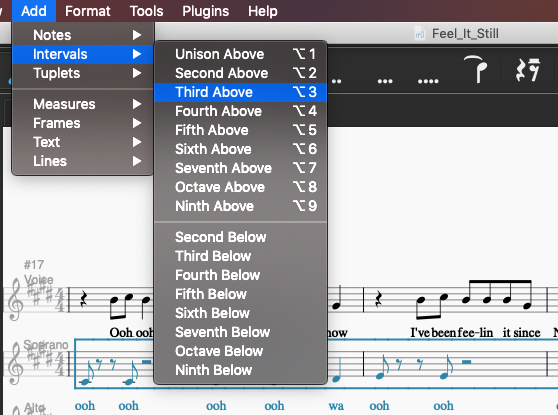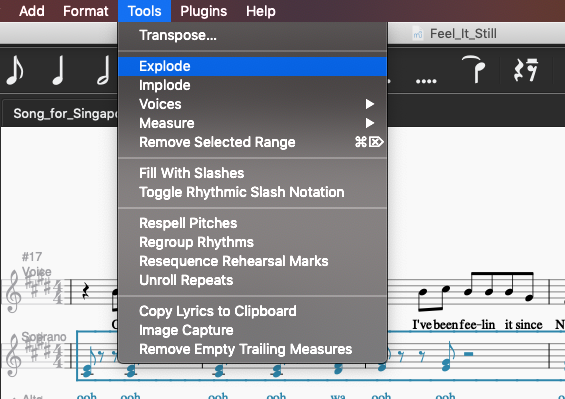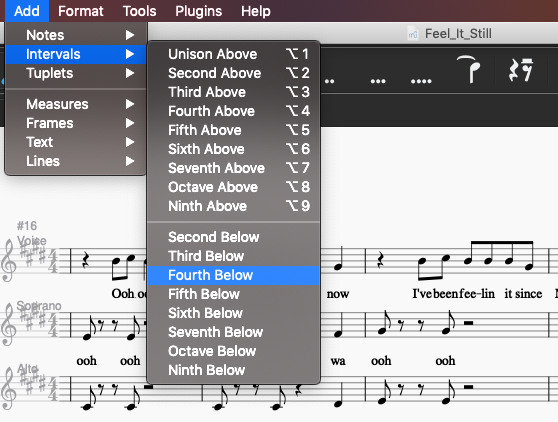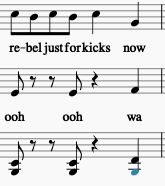Arranging Tips: The Basics (Part 3)
In the previous post, we learnt how to churn out a super basic acapella arrangement:
- Add bass line
- Add melody line
- Add harmony lines
And here’s what the outcome was:

So today we’re gonna learn how to spice things up a little hehe 🙂
===
Step 4a: Create (+/- steal) nice musical ideas
If the upcoming musical ideas look/sound familiar, that’s because I’m blatantly copying the PTX arrangement.
Okay not the most accurate copying I’ll admit, but it’s enough to illustrate the arranging concepts.
I’m doing this just to show how the idea works. I personally prefer coming up with my own ideas.
Personal tip to coming up with your own ideas: sing randomly along to the song and see what your brain produces. If you like it then write it in.
===
Step 4b: Tweak a harmony line with nice musical ideas

Try to include lyrics…
===
Step 4c: Copy-paste the musical ideas in other harmony lines

… so that they get copied over too.
===
Step 4d: Shift the harmony lines up and down

===
Step 4e: Correct individual notes to make sure the chords are correct

===
If you can’t visualise the chords so well, you could also do this:









And there you go 🙂 a nicer harmony line!
===
Step 5: Write interesting bass riffs

I want to draw your attention to a few concepts here.
===
Firstly: Leading Notes (I thinkkk that’s the right term…?).
The first new bass note we added (2nd bar from the left) is used to bridge the gap between the 2nd and 3rd bars.
It’s called a leading note because it leads into the next important note (in the next bar).
===
Secondly: Pitch on the pulse (that’s my own term).
Even though the bass riff in the 4th bar starts with an A (which isn’t in the E major chord), it’s fine because it’s happening at a time where the pitch isn’t as important.
The pitch goes back to G# on the 4th pulse, which nicely fits into the chord.
I like to think of it as a hierarchy actually. The pitch of the bass note is more important at some points of the bar than others:
- 1st pulse >> 3rd pulse >> 2nd ≥ 4th pulse
Basically, it’s most important on the 1st pulse, and decreasingly important for each further division by 2. Between the 2nd and 4th pulse, I consider the 4th a little less important coz the bar is about to end anyhow.
===
Thirdly: Jumping between notes in the chord
In the 2nd bass riff (ending of the 4th bar), notice how the last two notes are G# and E (both notes within the E major chord). This is another little trick you can use to create movement in the bass line without messing up the chord.
Note that you can have this go in the ascending direction too.
===
Finally: Pentatonic Scale
Notice the riff I wrote in the 8th bar. That’s not the PTX one, but I wanted to show you how to use the pentatonic scale for bass lines.
The pentatonic scale is basically 5 notes (penta) per octave. Specifically, they’re the 1, 2, 3, 5, 6 (Do Re Mi So La) of the key (slightly oversimplified).
The important thing is that for (almost) any default chord from a key, you can still plug in any note from the pentatonic scale and it’ll still sound fine.

So in the case of C major, the bass note can be C D E G or A. In the key of E major, the bass note can be E F# G# B or C#.
By jumping around the pentatonic scale and using notes of a shorter duration, it becomes easy to write interesting bass riffs.
That’s legitimately the best tip I have for writing bass riffs.
===
And with that, we have a much more interesting arrangement of Feel It Still 🙂

Just a final point about the pentatonic scale: it’s not just applicable to bass lines only. It’s applicable to all the lines!
Don’t believe me? Take a close look at the melody 🙂
===
Well that’s about it for the absolute basics of decent acapella arranging. It’s not that difficult right! 🙂
Hope you feel more prepared to try arranging your own music now!
~ Andrew